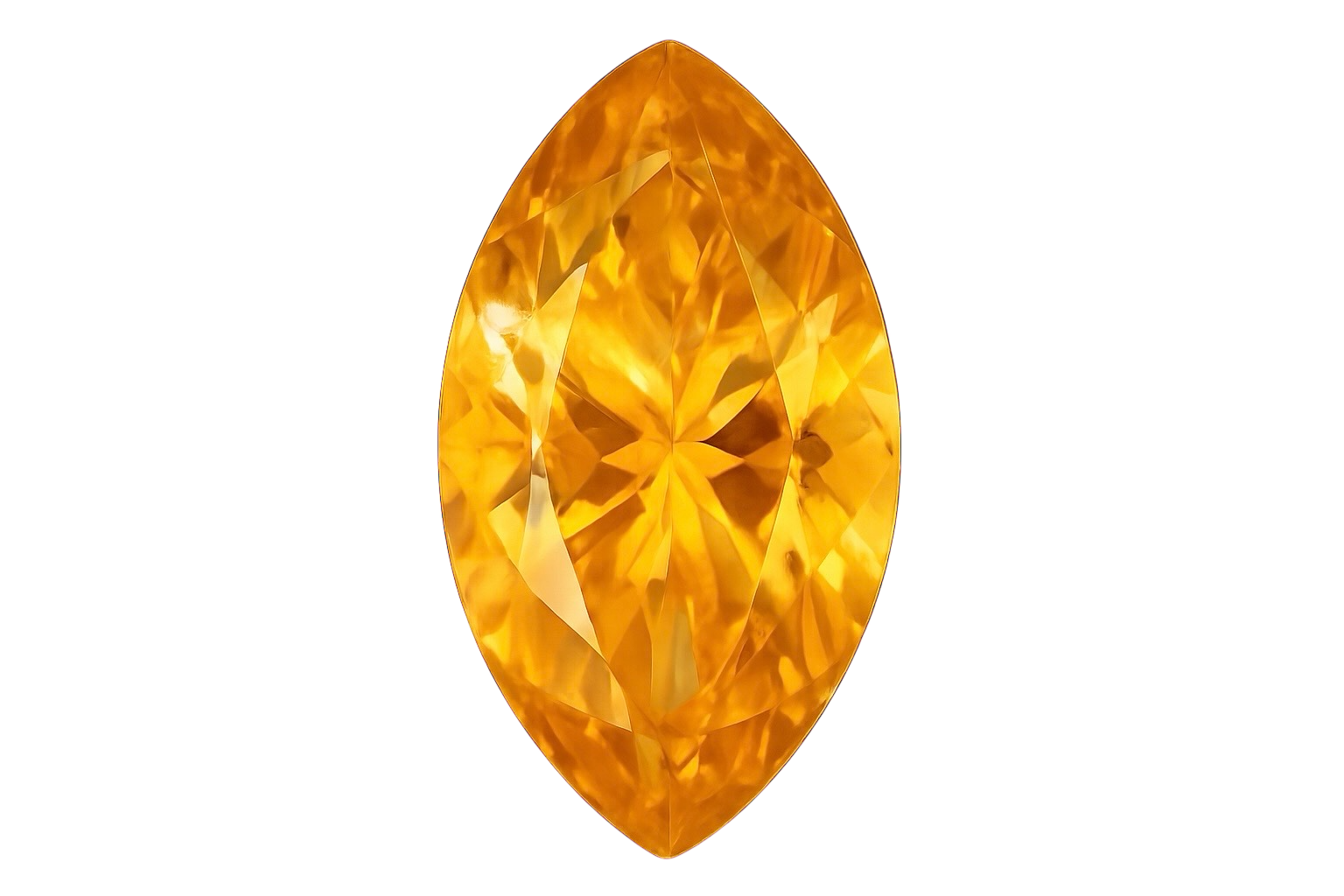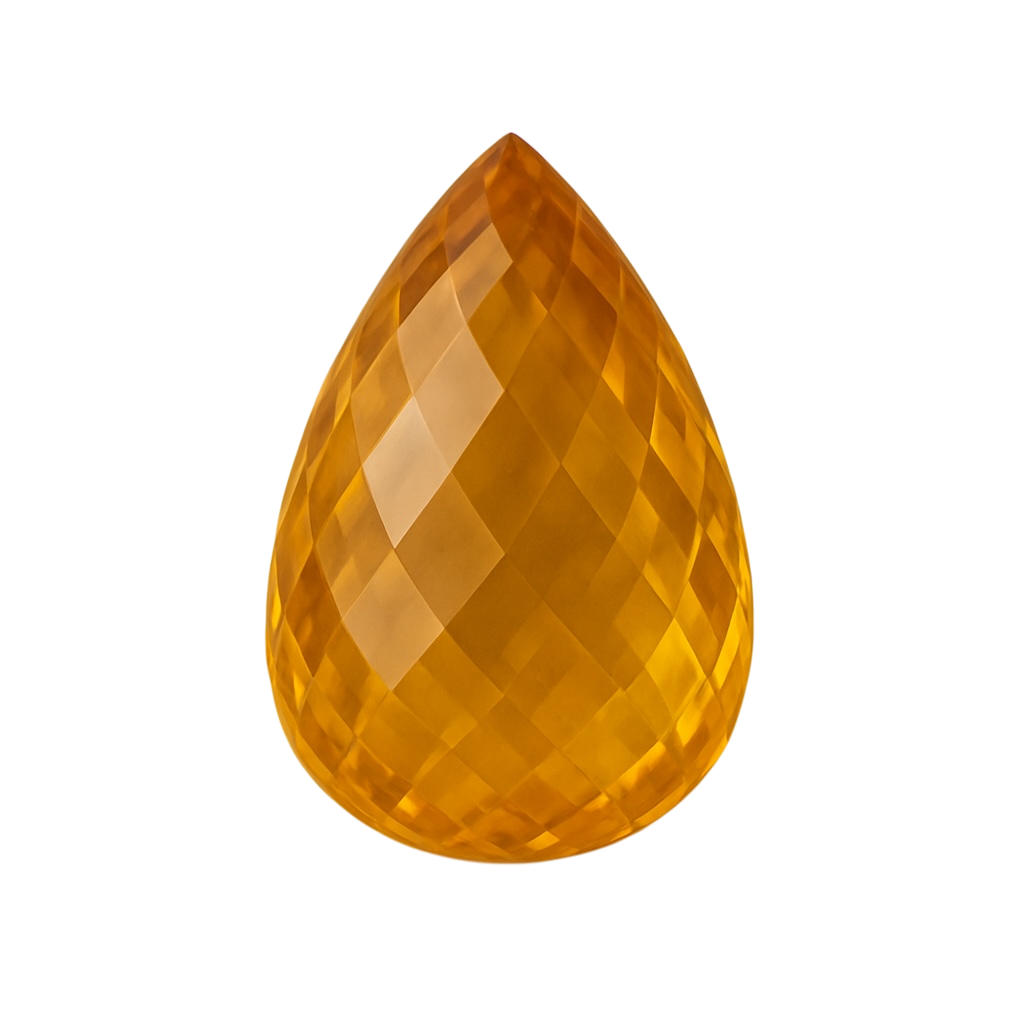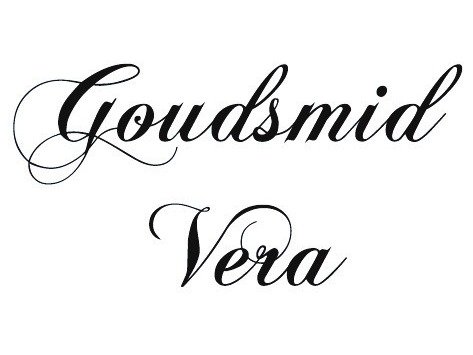
Citrine
Color: Citrine belongs to the quartz family and has a warm yellow to golden brown color. The tone ranges from pale yellow to deep amber, sometimes with a hint of orange. The color is created by traces of iron in the crystal.
Hardness: 7 on the scale of Mohs. Citrine is a durable gemstone suitable for everyday jewelry, though it should be protected from hard impacts and extreme heat.
Location: Major sources include Brazil, Madagascar, Russia, Spain, France, Zambia, and the United States. Brazil is the largest producer of commercial citrine.
Types and Characteristics:
-
Ametrine: A rare combination of amethyst and citrine in one crystal, with zones of purple and yellow. It forms as a result of temperature variations during crystal growth.
-
Madeira citrine: Deep orange to reddish gold; intense in color and highly valued for its warm glow.
-
Palmeira citrine: Bright golden yellow to orange tone; clear and sparkling.
-
Pallida citrine: Pale yellow and subtle in color; elegant and refined in appearance.
Value: The value of citrine is determined by color intensity, clarity, and size. Deep golden or orange tones, such as those found in Madeira or Palmeira citrine, are the most valuable. Ametrine is also highly valued for its unique two toned appearance.

